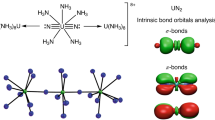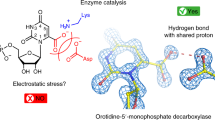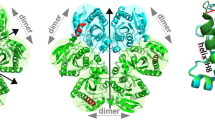Abstract
THE accepted structure of the purpurate ion, C8H4N5O6−, consists of two trihydroxopyrimidine rings (probably in the triketo form) linked at the 5-positions by the group = N−. Two possibilities at once arise. Either (a) the bridge angle is about 120°, in which case the ring planes must be steeply inclined to one another owing to the steric effect of the carbonyl oxygen atoms. The double bond must then be localized on one side of the bridge, and the rings will not be equivalent (only one carries a negative charge). Although there is chemical evidence1 that the rings are not equivalent, this is based on the supposed non-equivalence of the rings in alloxantin, and a recent determination of crystal structure2 has shown that the latter is in fact centrosymmetric. Alternatively, (b) the bridge may be linear and the rings coplanar. This would permit delocalization of electrons over an eleven-atom conjugated system, but would require that the non-bonding electrons of the central nitrogen atom occupied a pure p-orbital, a situation for which there is no precedent.
This is a preview of subscription content, access via your institution
Access options
Subscribe to this journal
Receive 51 print issues and online access
$199.00 per year
only $3.90 per issue
Buy this article
- Purchase on Springer Link
- Instant access to full article PDF
Prices may be subject to local taxes which are calculated during checkout
Similar content being viewed by others
References
Winslow, N. M., J. Amer. Chem. Soc., 61, 2089 (1939).
Singh, Chatar, Acta Cryst., 19, 767 (1965).
Author information
Authors and Affiliations
Rights and permissions
About this article
Cite this article
BLAKE, A. Crystallographic Evidence for a Symmetrical Structure for the Purpurate Ion. Nature 212, 67–68 (1966). https://doi.org/10.1038/212067a0
Issue Date:
DOI: https://doi.org/10.1038/212067a0
Comments
By submitting a comment you agree to abide by our Terms and Community Guidelines. If you find something abusive or that does not comply with our terms or guidelines please flag it as inappropriate.



